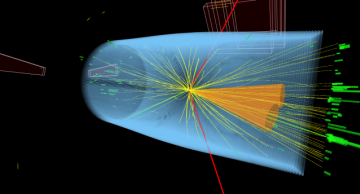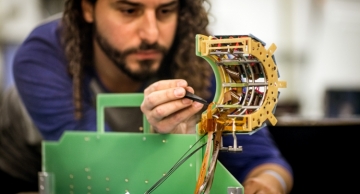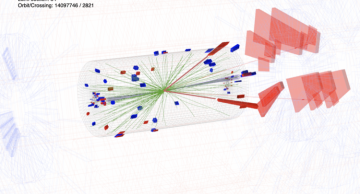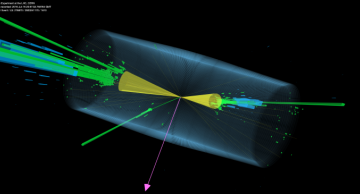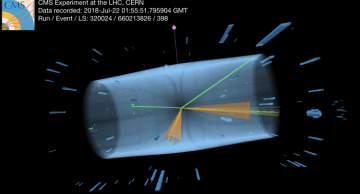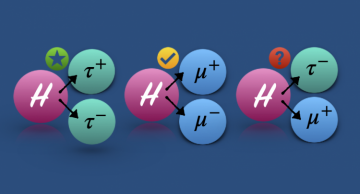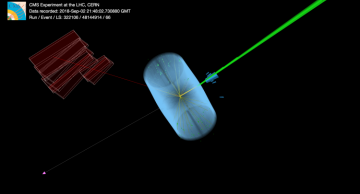A shot in the dark: Can jets recoil against Dark Matter?
In their 2020 hit single ‘A Shot in the Dark’ the rock band AC/DC got it right in many ways:
“A shot in the dark
Make you feel alright
A shot in the dark
All through the…
News
|
fblekman |
Physics
Using machine learning to improve the detection of new physics in the interactions of the top quark
Although our theory describing the interactions between fundamental particles is exceptionally successful, it has weaknesses. You may have…
|
fblekman |
Physics
Quarks are elementary particles in the Standard Model and the building blocks of the protons and neutrons in atoms. The dominant force between quarks is the strong interaction. Gluons are the force carriers of the strong interaction, and one thing…
|
fblekman |
Physics
In the LHC, groups of 100 billion protons collide 25 million times every second. But most of these protons miss, so each time we point the protons at each other doesn't give us 100 million proton-proton collisions. In fact, collisions are much…
|
fblekman |
Physics
The CMS collaboration has submitted a paper with a new, precise analysis of the data enriched in the Higgs boson decays to four leptons. Simultaneous measurement of the Higgs boson production and decay was essential in this analysis.
The…
|
fblekman |
Physics
Experimental evidence from the last half-century has established the standard model as a foundational theory of particle physics. Still, it is clear that the standard model is not the final theory. There are many open questions: Is the mass of Higgs…
|
fblekman |
Physics
The Standard Model of the fundamental particles describes the W and Z bosons as the mediator particles of the weak force, one of the four known fundamental forces responsible for the phenomenon of radioactivity and an essential ingredient to our Sun…
|
fblekman |
Physics
Since the LHC first began colliding protons over ten years ago, CMS physicists have hoped to find evidence for one of the most popular and expansive theories of New Physics -- Supersymmetry. The key idea of Supersymmetry (or “SUSY”) is…
|
fblekman |
Physics
The term 'flavor' was introduced by Murray Gell-Mann and his student Harald Fritzsch to describe the different types of quarks known at the time – up, down, and strange – the list of quark flavors grew to six. The term is adapted for the lepton…
|
fblekman |
Physics
Are there more fundamental particles than the ones we currently know? Do we live in a Universe with additional spatial dimensions? These hypotheses are among the many ideas that have been suggested to explain how to unify the electroweak and…
|
fblekman |
Physics
The CMS Collaboration has released the results of a new analysis that looks for the subtle influence of “new physics” in the production of a W boson and photon pair.
The standard model of particle physics is an incredibly successful…
|
fblekman |
Physics
High energy heavy-ion collisions provide a unique opportunity to study one of the four forces of nature, the strong force, under extreme conditions. A new result from the CMS experiment shapes our understanding of the strong interaction and further…


